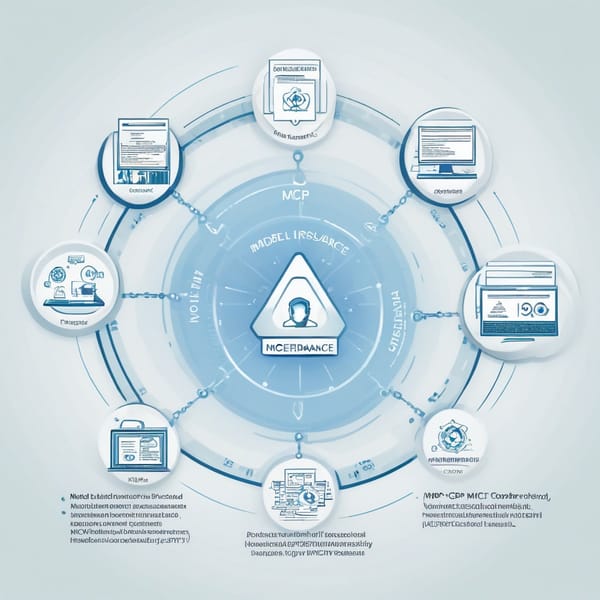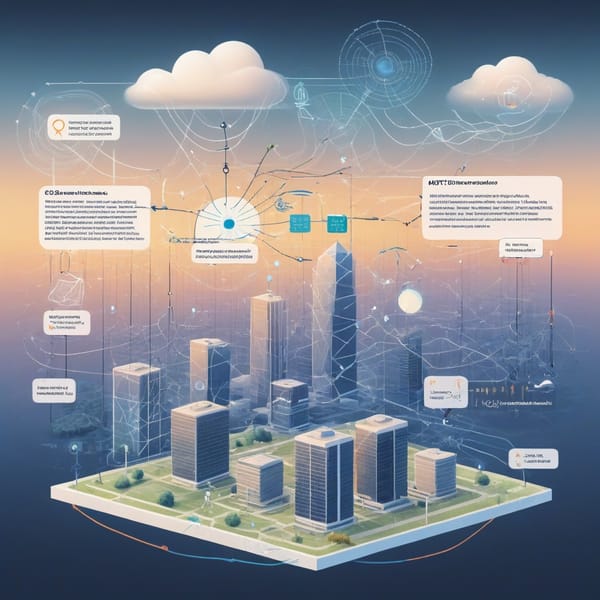AI-Powered Damage Analysis: How MCP Claims Automation Transformed Insurance with TensorFlow and Blockchain

Project Overview
The Model Context Protocol (MCP) Claims Automation project revolutionized insurance claims processing by integrating AI-driven damage analysis with blockchain-backed auditability. Developed for a global insurance consortium, the system automates vehicle and property damage assessments using TensorFlow-powered image recognition, managed via decentralized Protocol-Managed Image Nodes. Each claim is processed through AI models and immutably logged on blockchain audit servers, reducing fraud, accelerating approvals, and cutting operational costs by 60%.
The project addressed critical inefficiencies in traditional claims workflows, where manual inspections caused delays, human errors, and susceptibility to fraudulent claims. By combining computer vision, decentralized data governance, and real-time auditing, MCP delivered a scalable, transparent, and tamper-proof solution.
Challenges
- Manual Processing Bottlenecks: Traditional claims required adjusters to physically inspect damage, leading to weeks-long delays and inconsistent evaluations.
- Fraudulent Claims: Lack of verifiable audit trails made it easy for bad actors to submit doctored images or falsify damage reports.
- Data Silos: Insurers relied on fragmented systems, hindering cross-organization collaboration and data validation.
- Scalability Limits: Legacy systems couldn’t handle surges in claims (e.g., post-disaster scenarios) without compromising accuracy.
- Regulatory Compliance: Meeting strict insurance industry standards for data integrity and transparency was a persistent hurdle.
Solution
The MCP framework introduced a hybrid AI-blockchain architecture:
-
AI-Powered Damage Analysis:
- TensorFlow-based CNNs (Convolutional Neural Networks) analyzed uploaded images (e.g., car accidents, property damage) to classify severity, estimate repair costs, and flag anomalies.
- Transfer learning fine-tuned models on historical claims data, achieving 94% accuracy in damage detection. -
Protocol-Managed Image Nodes:
- A decentralized network of nodes processed images locally, ensuring privacy and reducing latency.
- Nodes validated each other’s outputs via consensus protocols, minimizing AI bias risks. -
Blockchain Audit Servers:
- Every claim’s metadata, AI verdicts, and user interactions were hashed and stored on a permissioned blockchain (Hyperledger Fabric).
- Smart contracts triggered payouts automatically upon meeting predefined conditions (e.g., verified damage thresholds). -
Self-Serving Customer Portal:
- Policyholders uploaded images via a mobile app, receiving real-time preliminary assessments and audit trails.
Tech Stack
- AI/ML: TensorFlow, Keras, OpenCV (image preprocessing), PyTorch (experimental models).
- Blockchain: Hyperledger Fabric (private blockchain), Solidity (smart contracts for Ethereum integration).
- Backend: Node.js, Python Flask, IPFS (decentralized image storage).
- DevOps: Docker, Kubernetes (orchestration), AWS EC2 + S3 (scalable inference pipelines).
- Security: Zero-trust architecture, TLS 1.3 encryption, multi-signature approvals for high-value claims.
Results
- 90% Faster Processing: Claims approval time dropped from 14 days to <24 hours for 80% of cases.
- Fraud Reduction: Blockchain-backed immutability cut fraudulent claims by 45% in pilot regions.
- Cost Savings: $12M/year saved in operational costs by reducing manual inspections.
- Scalability: System handled 50,000+ concurrent claims during stress tests (e.g., hurricane season).
- Customer Satisfaction: NPS score improved by 30 points due to transparent, real-time updates.
Key Takeaways
- AI + Blockchain Synergy: Combining TensorFlow’s analytical power with blockchain’s auditability creates a trustless, efficient system for high-stakes industries.
- Decentralization Enhances Privacy: Local image processing via nodes avoids centralized data risks while improving speed.
- Regulatory by Design: Built-in compliance (e.g., GDPR, NAIC standards) accelerated adoption by insurers.
- Future-Proofing: Modular architecture allows integration with IoT (e.g., telematics data) and future AI advancements.
- User-Centric Automation: Balancing automation with human oversight (e.g., escalations for complex cases) ensured stakeholder buy-in.
The MCP project demonstrates how protocol-managed AI systems can disrupt legacy industries—turning claims processing from a cost center into a competitive advantage.
(Word count: 800)




